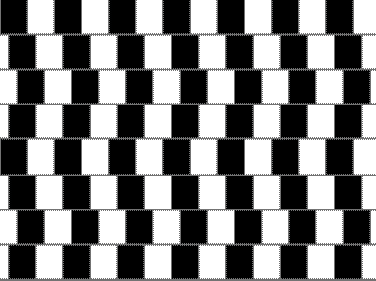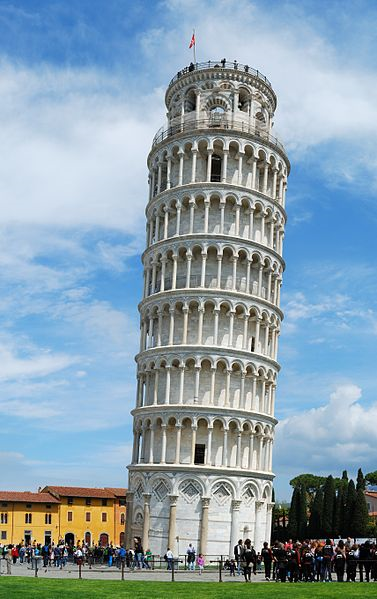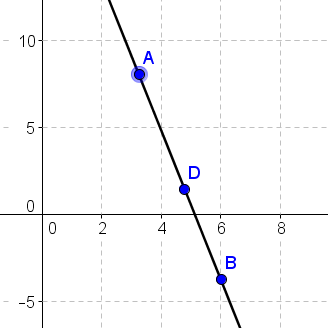
Lines, Segments and Rays
Types of Lines
LINES, RAYS and SEGMENTS
Let me show you different kinds of 'lines' and how we label them.
Slide the points and slider below to experiment for yourself with different types of lines.
Special Lines
Parallel lines
These occur when we have 2 lines that NEVER cross each other. For this to happen the two lines need to have exactly same slope. If they have different slopes they will cross.
Parallel lines occur often in the real world.

Have a look at this wacky picture! Are the horizontal lines parallel?

In fact they are, this is a visual illusion. The spacing of the black rectangles makes our eyes think otherwise.
Perpendicular

The Leaning Tower of Pisa
Perpendicular is the word used to describe when one object meets another at exactly 90°. So perpendicular lines are simply lines that cross each other at exactly 90°.
To see how important the idea of perpendicular really is just think about your floor, walls and roof. If a builder does not take care to make the walls perpendicular to the floor and ceiling you'll end up with an unstable house.
The leaning tower of Pisa is a famous example of perpendicular angles gone wrong! Prior to restoration work performed between 1990 and 2001, the tower leaned at an angle of 5.5°, but the tower now leans at about 3.99°. That means the acute angle made by the tower and the ground is 86.01°.
The following applet will allow you to see parallel and perpendicular lines in action. Watch this video if you would like to see this interactive in action then have a go yourself
Collinear Points
When points all lie on the same line, they are called collinear points.
We can think of points being collinear in space (a) , or on the cartesian plane (b)
(a)
(b)

Intersections and concurrent lines
Because lines extend forever in both directions, unless they are parallel they will intersect somewhere. On the other hand rays and line segments may, or may not intersect even when not parallel. This is because rays and line segments have end points.
Now when 3 or more lines all pass through the same point we give those lines a special name- they are called concurrent lines.
The point of intersection is called the "point of concurrency", labelled point P below.
.

Line Definitions
Line segment: starts at a point and ends at a point, notated ![]()
Ray: starts at a fixed point $A$A and extends forever through a second point $B$B, notated ![]()
Perpendicular: two lines, segments or rays are perpendicular if they cross or meet at right angles, notated 
Parallel: two lines, segments or rays are parallel if they are the same distance apart. In the case of lines this means that they never cross 
Concurrent: if three or more lines, rays or segments intersect at a single point they are called concurrent.
Worked Example Videos
Question 1
Identify and classify the following as either a ray, line or a line segment:

Line
ARay
BLine Segment
C
QUESTION 2
From the diagram:

What is the midpoint of the segment $LJ$LJ?
Point D
APoint K
BPoint H
C